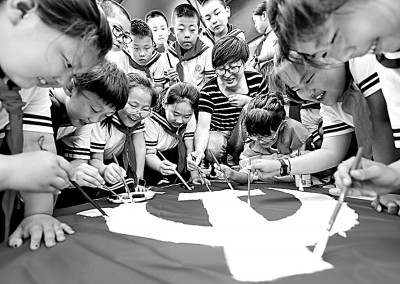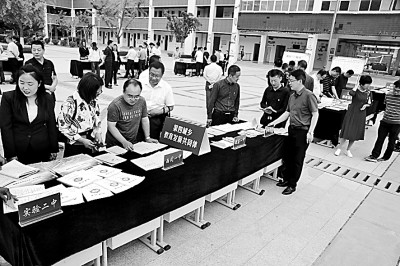[thoughts]
Author: Zhi Tingjin (Professor, Department of Education, East China Normal University, Deputy Director, Training Center for Middle School Principals, Ministry of Education)
Since 1985, China has implemented the principal responsibility system in primary and secondary schools, which has made outstanding contributions to promoting the development of basic education. However, compared with more than 30 years ago, the internal and external environment of educating people in primary and secondary schools has changed greatly, and it is urgent to change the logic of school governance. In January, 2022, the General Office of the Central Committee of the CPC issued the Opinions on Establishing the Principal Responsibility System for the Leaders of Party Organizations in Primary and Secondary Schools (hereinafter referred to as the Opinions), aiming at strengthening the Party’s overall leadership over education and ensuring that the Party’s educational policy and the decision-making arrangements of the CPC Central Committee are implemented in primary and secondary schools. We should deeply understand the connotation of principal responsibility system led by Party organizations in primary and secondary schools, turn the advantages of this system into the effectiveness of school governance, and promote the high-quality development of basic education under the overall leadership of the Party.

Party member from Changdecheng Community, Haigang District, Qinhuangdao City, Hebei Province and students from Jianguo Road Primary School jointly drew party emblem. Photo by Cao Jianxiong/Bright Picture
1. Understand its connotation from three dimensions.
The connotation of principal responsibility system led by Party organizations in primary and secondary schools can be understood from three dimensions.
The first dimension: this is an extension of the strict and efficient party organization system in the field of basic education. In China’s national governance system, the party’s leadership runs through all fields and levels, and has achieved remarkable results in national governance, reflecting significant institutional advantages. In the Communist Party of China (CPC)’s organizational system, Party committees at all levels, from central to local, are the main axes, and grass-roots Party committees, general branch committees, branch committees and other grass-roots Party organizations are generally set up in grass-roots and industrial fields. As the embodiment of the personality of the ruling party, party member takes himself as the carrier in all levels, fields and industries, and puts the party’s organizational will and value pursuit into their respective professional roles and work scenes. As a result, the party has realized a set of organizational networks "horizontally to the edge and vertically to the end". As an important governance unit of basic education, school is an important part of "Party, government, military and civilian studies". In the system construction of modernization of basic education governance, the party’s leadership plays a decisive role in political direction, system construction and policy deployment. The Party’s grass-roots organizations in the field of basic education are effective mobilization and organization tools. We need to fully understand and give play to the multiple political functions of grass-roots party organizations in mobilization, organization, interest aggregation and coordination, and ensure that all work in the field of basic education is carried out under the overall leadership of the Party.
The second dimension: this is the improvement of the party’s organizational form to the governance efficiency of basic education. Democratic centralism is the fundamental organizational principle of our party. By carrying out centralization on the basis of fully developing democracy, the leadership authority, high cohesion, great mobilization and strong action force on the basis of democracy have been formed, so as to ensure the effective implementation and execution of the party’s will and instructions; The network-based organizational embedding mode has not only the hierarchical setting with clear authority and function, but also a wide organizational network, which has realized the party’s comprehensive leadership over all fields of the whole society. As far as the governance of basic education is concerned, at present, China’s basic education reform has entered the deep water area, involving a complex situation of multi-field and multi-sector, and cross-sectoral cooperation between government departments has become the norm. However, because the rules and regulations of each department have their own logic and rules, sometimes cross-departmental cooperation will encounter bottlenecks or obstacles. The author found that the establishment, professional title and salary are the three most concerned policies of principals and teachers in the field of basic education, and their reforms all involve complex inter-departmental cooperation between governments. Under the background that the task of education reform and development is complex and arduous, and cross-departmental cooperation is facing difficulties, we must rely on the leadership of the Party, and take the overall situation and coordinate all parties with the highest authority of the Party, so as to effectively carry out cross-departmental cooperation and transform the institutional advantages of the leadership of the Party into high governance efficiency.
The third dimension: this is the transcendence of the governance structure of party and government planning over the traditional basic education governance. In the critical period of realizing Chinese-style education modernization, it is necessary to stimulate and release the governance kinetic energy of the traditional governance model through continuous reform and innovation. Conventional management is mostly routine or procedural affairs, aiming at maintaining policy operation and system compliance. The overall governance of the party and government under the leadership of the Party can effectively overcome the shortcomings and drawbacks of conventional management, focus on a specific governance issue, accurately point the governance tasks and corresponding resources to a specific governance subject, and even directly mobilize relevant institutions, positions and personnel, greatly avoiding the efficiency loss caused by target replacement and information loss. Taking the policy of "double reduction" in compulsory education as an example, the Party’s overall leadership and high-level overall planning have avoided the conduction delay and governance failure often caused by traditional management inertia, and played a huge role in getting rid of the persistent and increasing academic burden of primary and secondary school students, and achieved remarkable governance effects.

The Education and Sports Bureau of lingbao city City, Henan Province launched the theme education activity of "Practicing" three approaches "and sinking to be a principal". At the promotion meeting of "sinking a line", more than 200 principals and vice principals of the city’s primary and secondary schools exposed their lecture notes, teaching plans and other materials for the participants to visit. Liu Xiaowei photo/bright picture
2. Transform institutional advantages into governance efficiency.
After correctly understanding the primary and secondary school principals’ responsibility system led by the party organization, the key lies in how to effectively transform the institutional advantages into the effectiveness of school governance.
First of all, it is necessary to clarify the relationship between the party and the government in school governance and determine the division of functions and responsibilities between the party and the government in education and teaching practice. Party organizations highlight political functions, give play to the role of collective leadership, and effectively lead the major decision-making agenda of school governance through political guidance and ideological guidance, such as making school development plans and decisions, selecting and using cadres, and exercising supervision responsibilities; The joint meeting of the party and government should become the connecting carrier between the leadership of the party organization and the implementation of decision-making, and fully negotiate and reach a consensus. The school leadership team will hold a joint meeting of the party and government under the leadership of the party organization to discuss the "three majors and one big" issues collectively, clarify the responsibility, form a joint force, and ensure the orderly operation of the work; At the same time, it is necessary to give full play to the supervisory responsibility of the party organization and correct the deviation in political style and business by improving the system.
Secondly, establish and improve a unified organizational leadership system, and party leaders and principals are responsible for reasonably decomposing target responsibilities. The core goal of school management is to improve the quality of education and teaching, and cultivate outstanding talents who can take on the great responsibilities of the times, which is a systematic project involving all the work of the whole school. It is the fundamental guarantee to improve the quality of school education and teaching to construct an all-round education system with the leadership of the party organization, the responsibility of the principal, the participation of all teachers and students, and the cooperation between home and school. No matter from the perspective of improving the quality of running a school or cultivating talents with higher quality, we should adhere to the school governance structure of educating people-oriented, problem-oriented, party and government coordinating, multi-subject participation and multi-department cooperation. According to the different classes, scale, foundation and tradition of basic education schools, we can adopt the forms of cross-job of party members and school administration, or shoulder-to-shoulder job of secretary and principal, so as to connect efficiently and give full play to the overall role under the overall leadership of the party.
Finally, ensure that the party organization effectively cooperates with all parties in school governance. Realizing the modernization of school governance system involves the cooperation between schools and the government, families, communities, teachers, students, parents and other subjects and various fields, which requires corresponding institutional arrangements, and all relevant subjects must cooperate closely and coordinate. Otherwise, there will be a phenomenon that the effectiveness of the system offsets each other. Giving play to the role of the Party organization in coordinating all parties concerned in school governance can be planned and promoted in the following aspects: First, the Party’s leadership effectively covers all fields, including ideological and political education, moral education, curriculum, teaching, research, team building and community activities, and cannot leave any dead ends; Second, the party governs the direction and concentrates on the overall, fundamental and key issues involving the development of the school; Third, the overall leadership of the party must play the role of ideological guidance, overall planning of resources and integration of strength, and effectively strengthen the political leadership ability, ideological guidance ability and organizational construction ability of party organizations in primary and secondary schools.
Guangming Daily (15th edition, January 17, 2023)
Source: Guangming Net-Guangming Daily